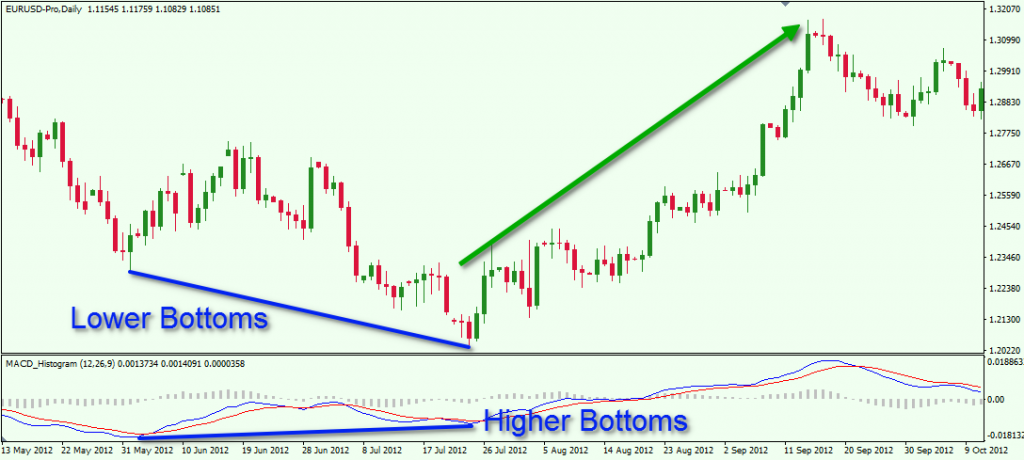Table of Contents
What does a divergence trade in forex mean?
Before going any further, we must first comprehend what a divergence to trade in the Forex market is.
When a currency’s price movement in Forex differs from what the technical indicator predicts, this is known as a divergence. These divergences indicate change is likely on the horizon because price movements frequently coincide with technical indicators.

Photo Credit: Forex Training Group
Types of Divergences
There are four different types of divergences that can occur in Forex. “Regular” divergences are considered to be the most important because they often give better quality signals when compared to “hidden” divergences. A regular pattern often signals a switch in what is currently being shown, while a hidden pattern signals that the same trend displayed will continue onwards.
Regular Bullish– this type of divergence in Forex, also called a positive divergence, shows as prices make lower than normal lows, but indicators still reflect higher lows. This usually signals that prices will end up taking a sharp uptick rather than continuing to fall.
Regular Bearish– a regular bearish divergence in Forex, or negative divergence, displays as a pattern with high prices above previous highs, all while the new high indicator is below previous highs. This often can signal that it will soon turn downward in trend and price.
Hidden Bullish– this is a divergence in Forex that will display prices as having higher bottoms, but the technical indicators will show lower bottoms. This “positive reverse divergence” usually shows an upward trend that can be predicted to continue onward.
Hidden Bearish– this is a pattern referred to as a “negative reverse divergence” in Forex. This type of divergence in Forex can be spotted by seeing a price with lower tops, and the indicator will show a higher overall top in price.
Trading on Divergences
First off, divergence trading is not a very common method to trade and not done very often as it requires a greater amount of skill and has a higher chance of failure. This is because even when approached with caution, using divergence as a signal does not always mean that this particular pattern will play out. Trading on divergences, simply put, is much more of a gamble.
Spotting and Forex trading on divergences in Forex require a careful eye and an experience level beyond what initial traders have. Saying this means that using divergences to attempt profit is not for the faint of heart or beginners.
Developing a trading strategy that includes divergences in Forex means that you need to have a keen eye to spot the highs and lows of the trend lines. Looking at regular divergences, the top and bottom will have to be chosen, and then the section where it is predicted to stop and reverse will have to be closely watched. Taking hidden divergences in mind, it may show a signal ahead of time in regards to if the trend is going to continue or not, so it is important to watch for this and know when to take action.
You also need to be wary not to hurry and jump on a trade if it looks like a divergence is about to happen. Sometimes a small divergence occurs, and if you make a trade on this, you will likely lose out on potential profit because these are not “real” or “true” divergences.
Long term charts will often display more accurate movements in highs and lows to determine when there is a true divergence and the frequency in which they occur.
Trading on divergences also means no matter what your overall chosen method may be, you should use stop-loss signals for your trades. A potential way to do this is to place a hard stop at where you predict the highest high will be before the market turns “bearish” and begins going downward. This way, the greatest profits can potentially be captured.
Signals for Trading
Once you know how to read the above patterns, there is the question of what is the signal for them. For divergence in Forex, traders need to watch for the oscillator divergence signals. These often will give a brief, recent history of patterns of divergences for that particular currency pair.
Of the multiple oscillator signals, the stochastic oscillator is one of the more accurate oscillators for determining and picking up when a divergence is going to or already is occurring.




